A Russian Airliner Landed In a Siberian Wheat Field. Now, Can It Get Back Up?
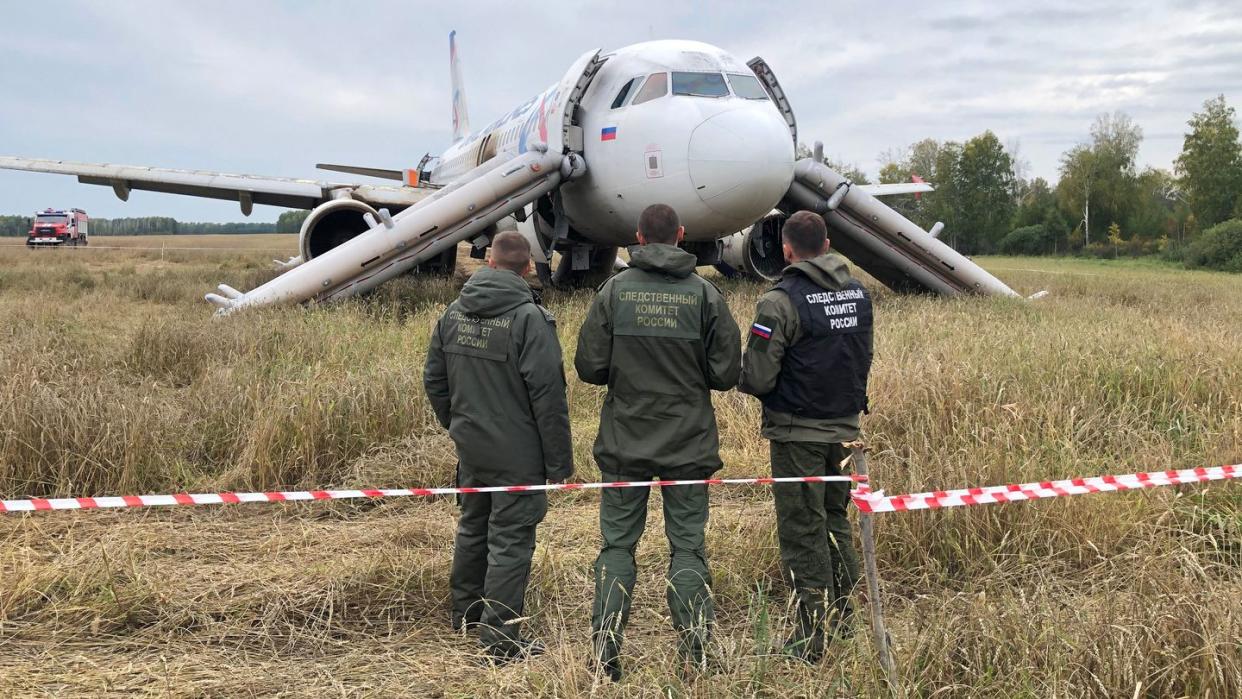
Trouble snowballed rapidly on Ural Airline Flight 1383 as it came for a landing at the Omsk Airport. In just 45 minutes, a routine domestic passenger run would conclude with a 37-meter-long Airbus A320-214 jetliner landing in a Siberian farming field.
In fact, it’s the second time something like this has happened to one of the airline’s Airbus jets in four years.
This time, there was a question. Is there a way for the roughly $100 million jet to safely take off from its improvised agrarian airstrip?
Flight 1383 had taken off from Sochi (on the Black Sea coast) at a quarter past 1 a.m. on September 12. But at 7:41 AM, as the jetliner descended to just 2,000 feet and lowered its landing gear, it suffered a hydraulic failure of its airbrakes.
Also known as spoilers, airbrakes are flaps built into the middle of the wing, and are raised to slow the plane down by inducing additional drag that ‘spoils’ the air flow. Without spoilers, the pilot wasn’t confident he could decelerate fast enough to safely land on Omsk’s 8,200-ft-long runway as originally planned.
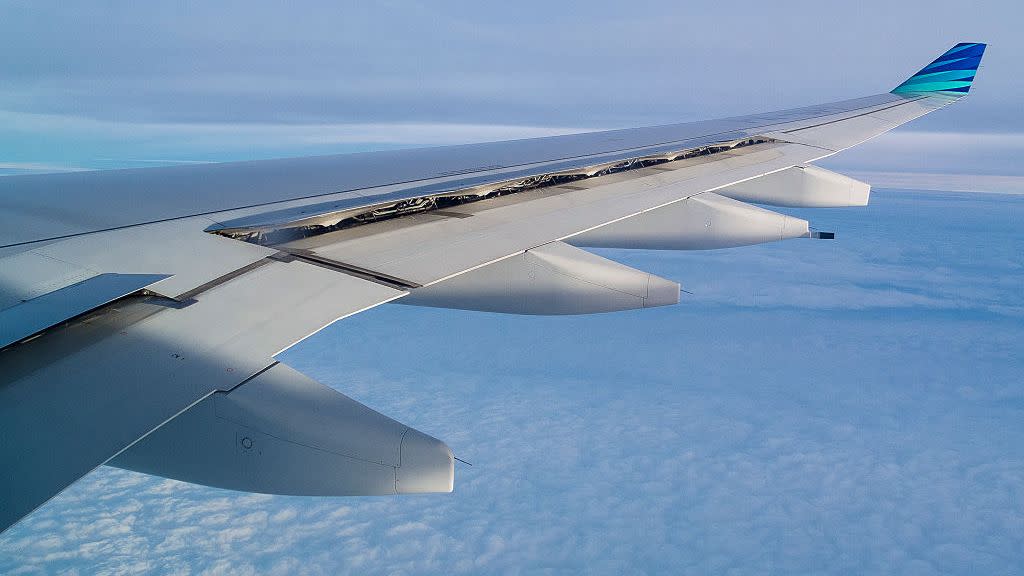
The failure was caused by a leak in the jet’s primary hydraulics systems, which may have depressurized while lowering the landing gear. However, oddly, the A320’s backup electric and engine-pumped hydraulics systems don’t appear to have been considered viable substitutes.
This problem was manageable, however. Pilot Sergey Belov and co-pilot Eduard Semyonov aborted their landing run, retracted the landing gear, and diverted to land at an airport in Novosibirsk with a 11,800-foot-long runway. In so doing, they found that the hydraulic problems extended to the landing gear bay doors, which failed to close even though the gear itself retracted.
The pilots calculated that it would take 8,380 pounds of fuel to reach Novosibirsk, 370 mile east of Omsk—and they had 9,260 pounds of fuel still in the tank. Some Russian officials also claim that Novosbirsk was chosen due to the airport’s better repair facilities.
However, drag from the open landing gear bay doors, combined with strong headwinds, slowed the redirected A320 down to little more than 300 miles per hour and decreased fuel efficiency by 25%. 45 minutes in, the pilots lost confidence that they would reach Novosibirsk before running out of fuel.
And so, 110 miles short of Novosobirk, they identified a flat-looking farming field 7 miles northeast of the Siberian village of Kamenka. And with just five minutes’ worth of fuel remaining, they landed in that field (with landing gears manually lowered down) at 9:44 AM. The jetliner plowed a 2,300-foot long furrow in the bare soil before coming to a halt.
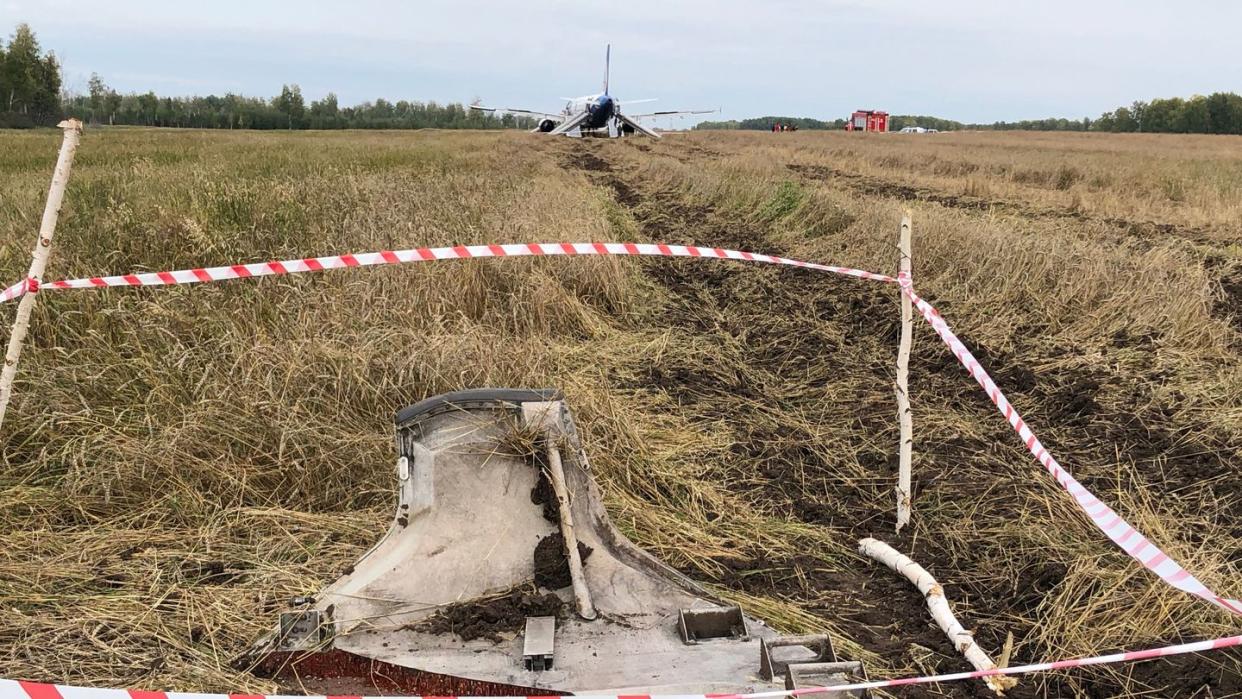
The Airbus A320 came down to land near the village of Kamenka, 10 km south of Ubinsk while on its way from Omsk to Novosibirsk. The landing site was chosen by visual ground inspection from the air. pic.twitter.com/oBxtqsTKGO
— JACDEC (@JacdecNew) September 12, 2023
Fortunately, none of the 162 passengers or six crew onboard were seriously injured in this “unscheduled landing” (as Ural Airlines put it)—though five people experienced contusions or stress-related health problems. After disembarking using the jet’s inflatable slide system, the passengers were briefly hosted in the nearby village of Ubanskoye before being ferried to Omsk by a West Siberian Railway train. The field’s owner has since been compensated, while the passengers received 100,000 rubles each ($985).
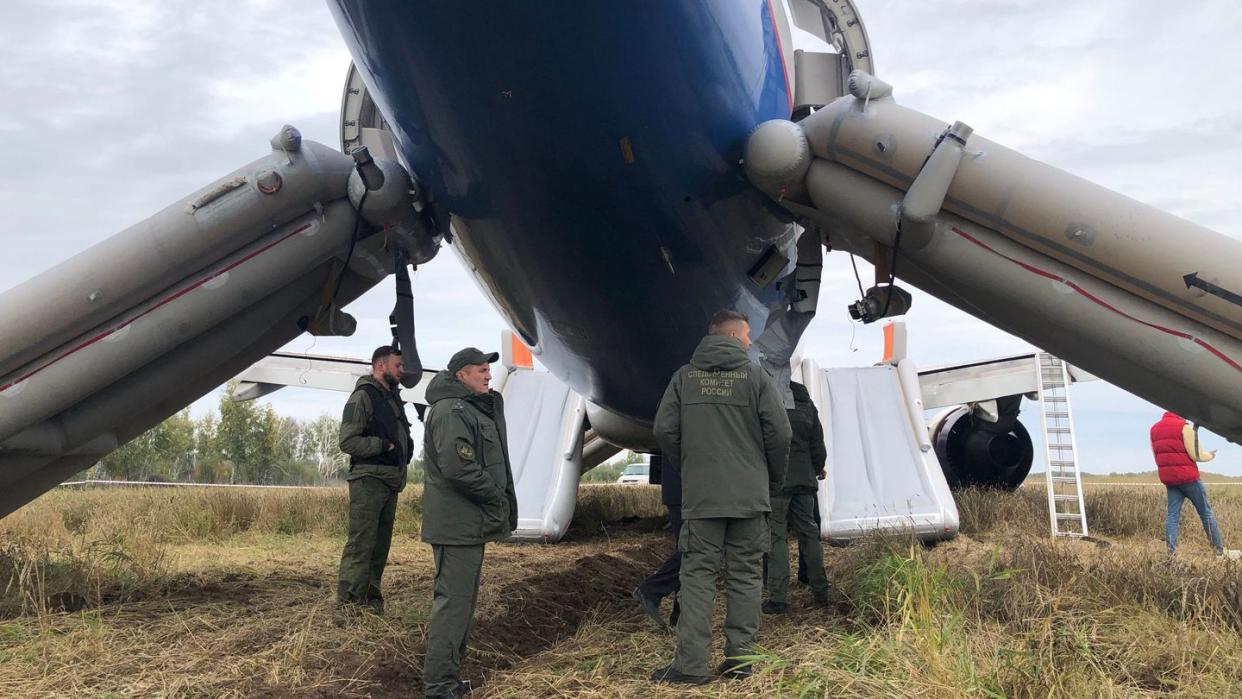
Read all about what we know, so far, regarding the accident that happened to Ural Airlines flight U6-1383 today. 👇https://t.co/TUF0mdJ7wc#aviation #accident #russia #BreakingNews pic.twitter.com/qsWcA3XUEM
— MenTourPilot (@MenTourPilot) September 12, 2023
Because the landing was executed gears-down, the jet didn’t take much damage—though its CM56 turbofans sucked in soil and its nose gear stress-fractured from impacting the unprepared surface.
Ural Airlines Airbus A320 (RA-73805, built 2004) made a forced emergency landing in a field near Novosibirsk and was evacuated via slides. All 167 occupants of flight #SVR1383 from Sochi to Omsk remained uninjured. Damage occurred to the landing gear and the wings. Early reports… pic.twitter.com/oA5gxHELgh
— JACDEC (@JacdecNew) September 12, 2023
Ural Airline’s Airbus A321 ‘Cornfield Bomber’
Weirdly, this is actually the second Ural Airlines Airbus jet to have landed in a farming field in four years. On August 15, 2019, a stretched A321 jet bound for Simferopol in Crimea blundered into a flock of gulls almost immediately after taking off from the Moscow-region Zhukovsky airport. Both engines sucked in gulls, causing one to cease functioning and the other to lose significant thrust.
In the so-called “Miracle over Ramensk,” pilot Damir Yusopov and co-pilot Georgy Murzin managed to belly-land the A321 on a cornfield directly in front of the runway, with only minor injuries to around 70 of the 230 persons onboard. The plane, VQ-BOZ, was written off and scrapped.
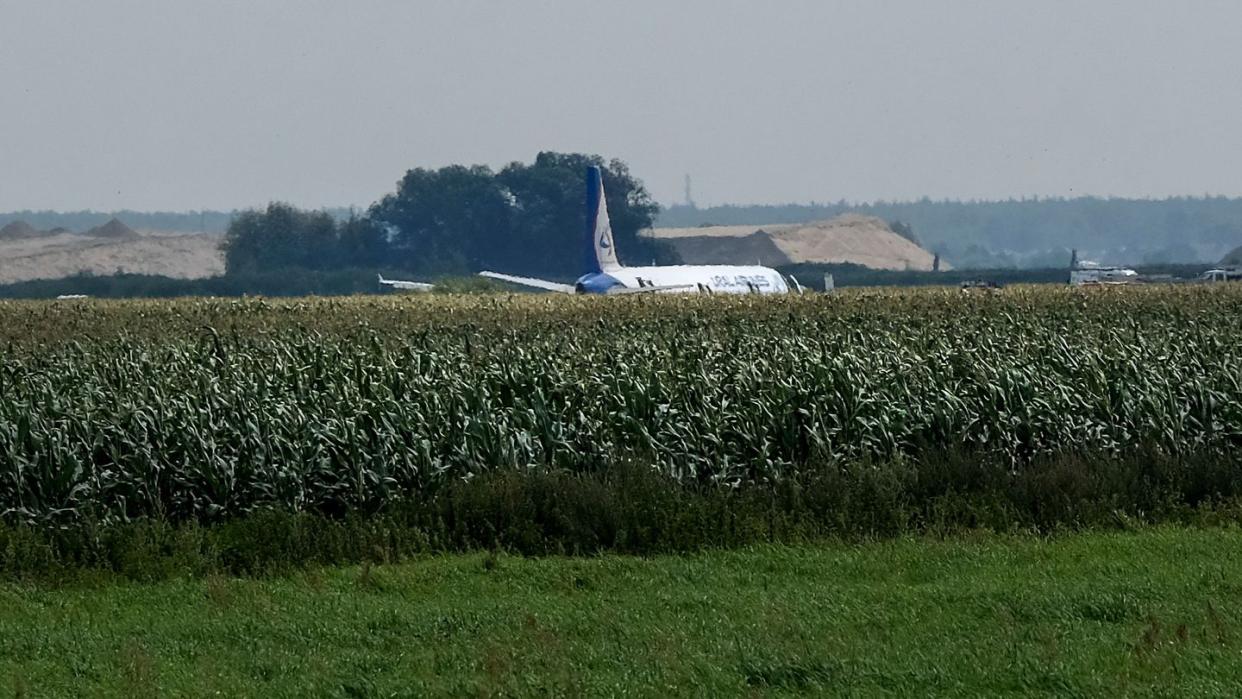
You can see a passenger’s recording of the takeoff and landing here.
Yusopov and Murzin were decorated by Putin, and the incident depicted in the Russian 2023 movie Emergency Landing.
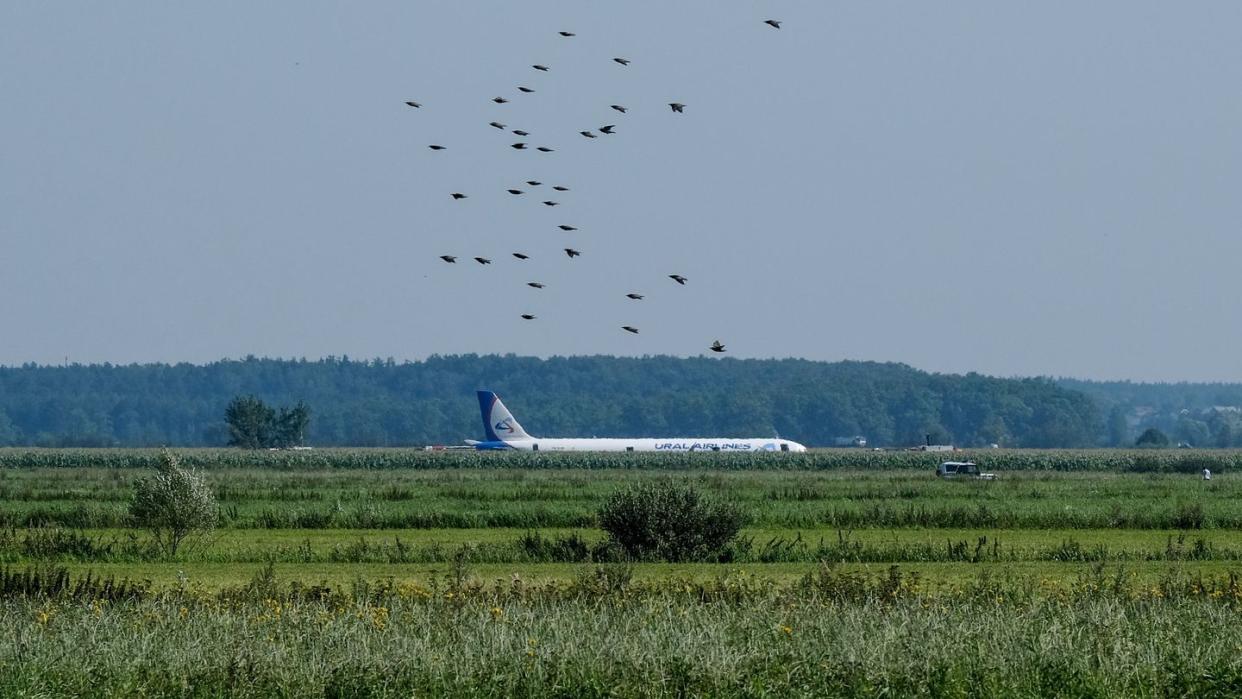
However, an accident investigation—leaked in August of 2022—criticized the pilots, both for taking off despite being audibly worried about the density of birds while still on the ground, and for their ‘disorganized and chaotic’ response (based on black box records). The bird problem itself was endemic at Zhukovsky airport—large flocks were notoriously attracted to feed off of illegal waste dumps close to the airport.
What brought Flight 1383 down? And can it get back up?
The A320-214 in question, registered as RA-73805, is just shy of 20 years old and originally served under Air Arabia. It then joined Air Arabia Maroc, and was later taken into the inventory of a Bermuda-based holding company. The plane was finally transferred to Ural Airlines in 2013, with re-certification now due in 2024.
Since Putin launched his full-scale invasion of Ukraine in February of 2023, Russian airlines have been under sanction and unable to obtain spare parts and services from Airbus. However, over 11,000 A320-series jets have been built since 1987. As a result, there are ample supplies of spare parts that can be purchased on the black market, particularly through middlemen in China and the United Arab Emirates. Or, at least, there presumably are—price markups and questions of reliability have made this less of a certainty. These make sustainment of Airbus jets possible, though at greater cost and reduced reliability.
Ural Airlines retired its last Soviet-built Tu-154 airliners in 2011, and its current fleet consists of 52 Airbus jets—4 A319s, 26 A320s, and 22 A320s.
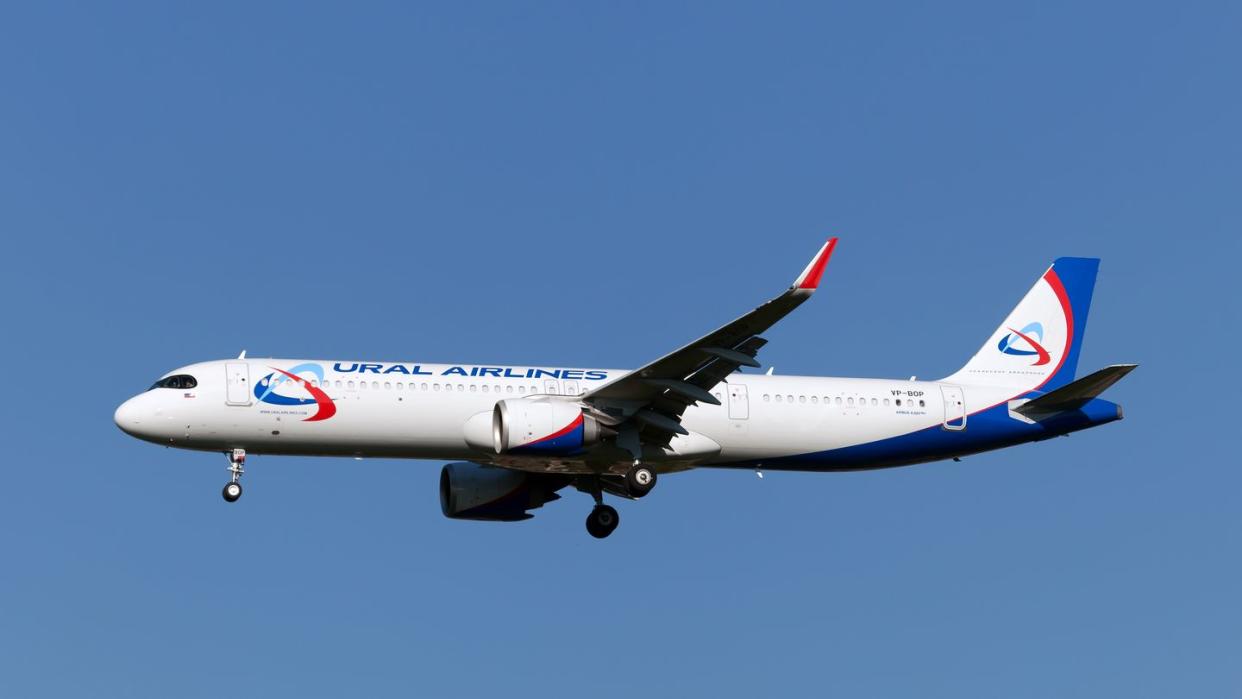
It’s widely speculated that the hydraulic failures on Flight 1383 were linked either to the use of faulty black market spare parts or to a lack of maintenance due to the overall spare parts shortage. However, Ural Airlines owner Sergei Skuratov insisted to the BBC that no black market spare parts were used on the plane.
Some Russian aviation analysts have questioned whether the decision to land in the field was the safest approach to the problem, arguing that backup hydraulics should still have worked and that landing at Omsk’s too-short runway would likely have been safer than the improvised landing that occurred. There are also questions as to why the jet didn’t end up having enough fuel to make it to its backup airport.
At present, a criminal investigation is underway over violations of aviation safety, during which the flight crew remains grounded. Meanwhile, Ural Airline is trying to figure out the safest way for its A320 to take off, as it sustained only minor damage in the landing.
Already, the company has announced that it had cleaned the soil and straw out of the jet’s turbofans, and that it’s considering removing passenger seating to lighten the aircraft and ease takeoff. Clearing a ‘runway’ for the jet through the field (including by removing loose soil and debris that could easily be sucked into the intakes), or towing it to a nearby road could improve the odds of a successful takeoff.
While repairs and preparation continue for what promises to be a truly unique flight in a few months’ time, a security company has been hired to stand guard around the jet—perhaps worrying that bits of the grounded aircraft could vanish due to the hunger for Airbus spare parts affecting Russia’s civil aviation sector.
You Might Also Like
